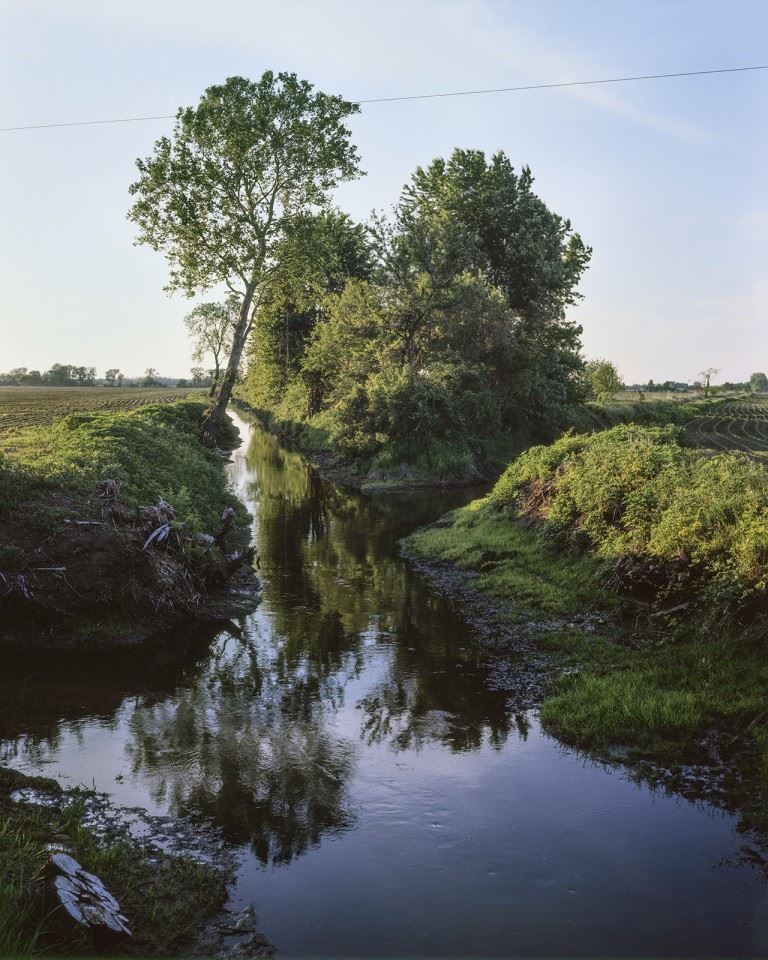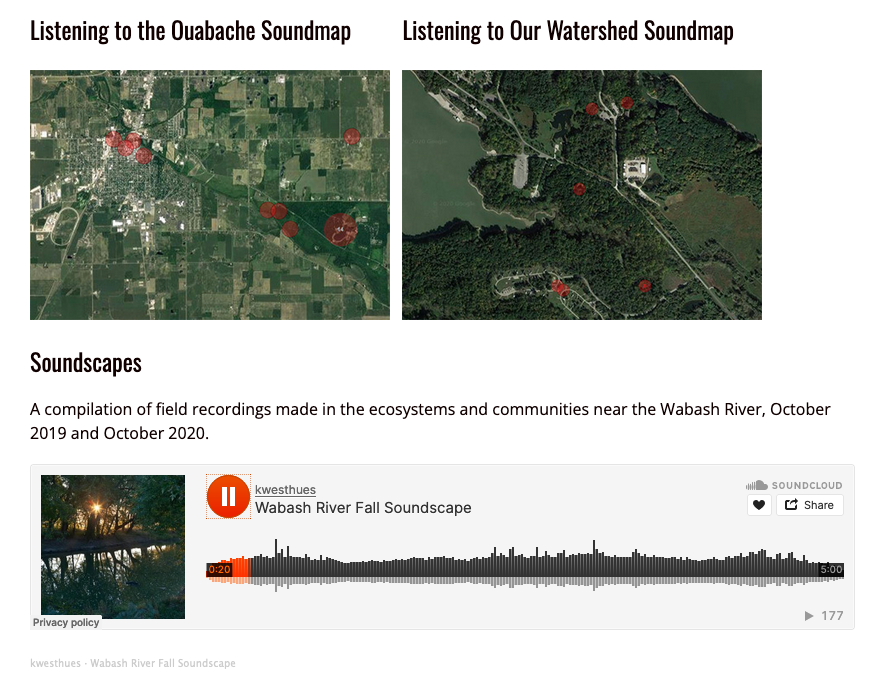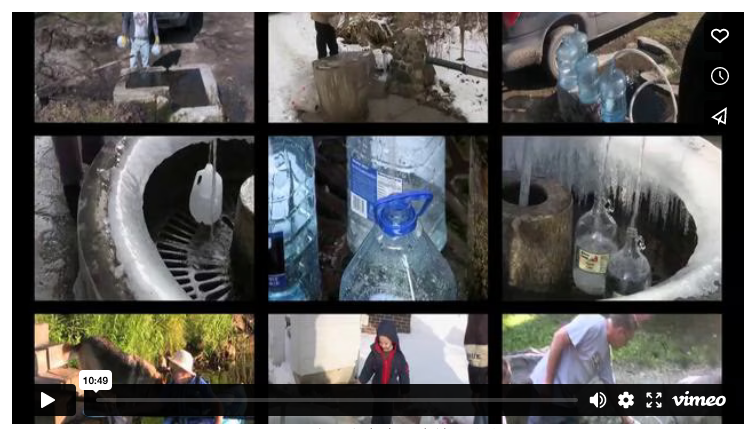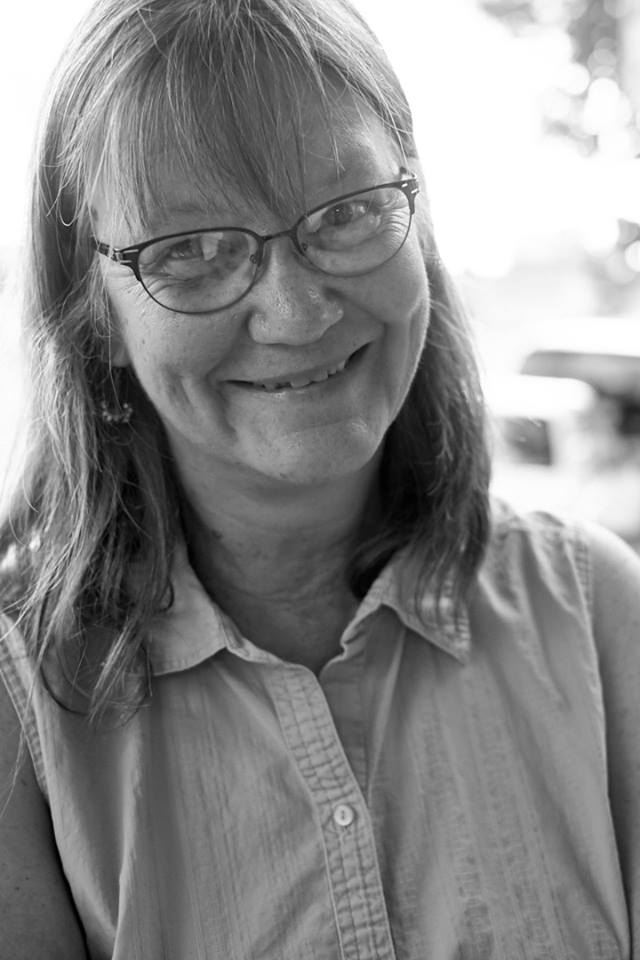MEMBER SPOTLIGHT
February 5, 2024
This week we recognize Kay Westhues, and her ongoing photography work documenting the changing landscapes of rural life in the Midwest.
“Fourteen Places to Eat, 2004-2010 (above) was inspired by my memories of growing up on a farm in Walkerton, Indiana, and observing first hand the shifting cultural identity that has occurred over time and through changing economic development. When I moved back to Walkerton as an adult in 2001, one of my biggest complaints was that there were practically no places to eat out. So I was happy when news arrived that a new restaurant was opening there. Imagine my surprise when I read a letter to the editor in the local paper that stated we already had enough places to eat. The writer counted a total of fourteen places to eat, which included four restaurants, three gas stations, four bars, a truck stop, a convenience mart, and a bowling alley. This letter was published during the beginning of my project portraying small-town life, and it gave the series its name.”
click images for more info
Westhues' Animal Swap Meet series, 2008- (above) documents the people, animals and places where humans buy, sell or trade animals in an open-air, flea-market-style setting. The most commonly sold animals are chickens and other birds, rabbits, pigs, reptiles, and dogs.Westhues is drawn to these places because they reflect the rural practices of small-scale subsistence farming and our complex relationship with the more-than-human species we live with.

For The Portage Path, 2015 (above), was commissioned by the Snite Museum of Art (now the Raclin Murphy Museum of Art) to commemorate the City of South Bend, Indiana's 150th anniversary. Kay focused on a portage path that linked the St. Joseph River to the Kankakee River which had been significant in the lives of people in North America for hundreds of years. This trail was the only overland segment of an ancient water route between the Great Lakes region and the Gulf of Mexico. The course was first established by Native Americans and then used by the French explorers and traders who traveled from Detroit to New Orleans. “I was fascinated by the idea that this area had been the site of cross-country travel and trade for such a long period of time as I am by the trail’s almost total disappearance from our landscape. As there was no actual trail to photograph, I decided to suggest the idea of a pathway in each of the images. They were taken in the approximate area of the original route, and I did not try to conceal the human-made changes that have taken place along it. I want these photographs to remind us that the history of South Bend did not begin in 1865; people were living in this region for hundreds of years previously and their knowledge and use of the land were directly responsible for the location of this city.”

Wabash River Soundmaps, 2019-2020 (above) is a participatory audio project about The Wabash River, the major drainage system in Indiana, amassing its water from streams and rivers from the northeast to the southwest corner of the state. “Thanks to two IAC Arts in the Parks grants, I visited three state parks along the river: Ouabache State Park and Mississinewa Lake and Salamonie Lake State Recreation Areas. As an artist in residence in 2019 and 2020, I made field recordings in the parks and in their surrounding communities and ecosystems. I also held workshops where participants recorded the seasonal sounds of the park, using digital recording equipment. All the sounds we recorded were added to the project soundmap. This activity is made possible with support by the Indiana Arts Commission, the Indiana Department of Natural Resources, and Sweetwater Sound Inc.”
Well Stories, 2011 (below), and The Specialness of Springs, 2021 are long-term explorations of roadside springs in the Midwest that are used as public water sources. This project is made possible, in part, with support from the Indiana Arts Commission and the National Endowment for the Arts. “This work examines roadside springs in and near my home state of Indiana. Traditionally, these water sources functioned as part of the public commons, freely accessed by travelers or those in need before municipal water systems were available. Some springs have been flowing for over a century and have played a central role in colonialization and Western expansion. The state once contained hundreds of springs in the public commons; today only a few dozen provide a safe water supply. These are still visited by individuals who collect the water out of preference or necessity. They are sites where geography, history, public policy, and public health intersect.”

Kay Westhues is an artist, photographer and folklorist interested in documenting the ways in which rural tradition and history are interpreted and transformed in the present day. Her work encompasses the fields of photography, videography, audio and ethnology. Through her work she aims to describe the vitality and complexity of places and people whose lives are often overlooked and unexamined. Westhues creative projects have been widely exhibited in the Midwest, including the South Bend Museum of Art, South Bend, Indiana; Snite Museum of Art, Notre Dame, Indiana; Midwest Museum of Art. Elkhart, Indiana; Noyes Cultural Arts Center, Evanston, Illinois; 2739 Gallery, Hamtramck, Michigan; and Pictura Gallery, Bloomington, Indiana. Her video Water Catchers was included as part of “Surface Tension: The Future of Water,” an international traveling exhibition organized by the Science Gallery at Trinity College, Dublin, Ireland. She has received support for art and curatorial projects through the Indiana Arts Commission and Puffin Foundation West. Westhues has a M.A. degree in Folk Studies (2017) from Western Kentucky University, a M.S. in Instructional Systems Technology (1998) from Indiana University, Bloomington, and a B.S. degree in Photography and Ethnocentrism from the Individualized Major Program at Indiana University, Bloomington (1994). www.kaywesthues.com
Featured images (top to bottom): ©Kay Westhues, Velma’s Diner, Shoals, Indiana, 2010, from the series Fourteen Places to Eat, 2004-2010, archival ink jet print; Rooster and Hen, Animal Swap Meet and Flea Market, Starke County, Indiana, from the Animal Swap Meets, 2008- , archival ink jet print; Grapevine Creek, 2015, from the series The Portage Path; Wabash River Soundmaps, 2019-2020, archival ink jet print; Well Stories: Water Catchers, 2011,single channel video (10:59); portrait of the artist by James Korn.
